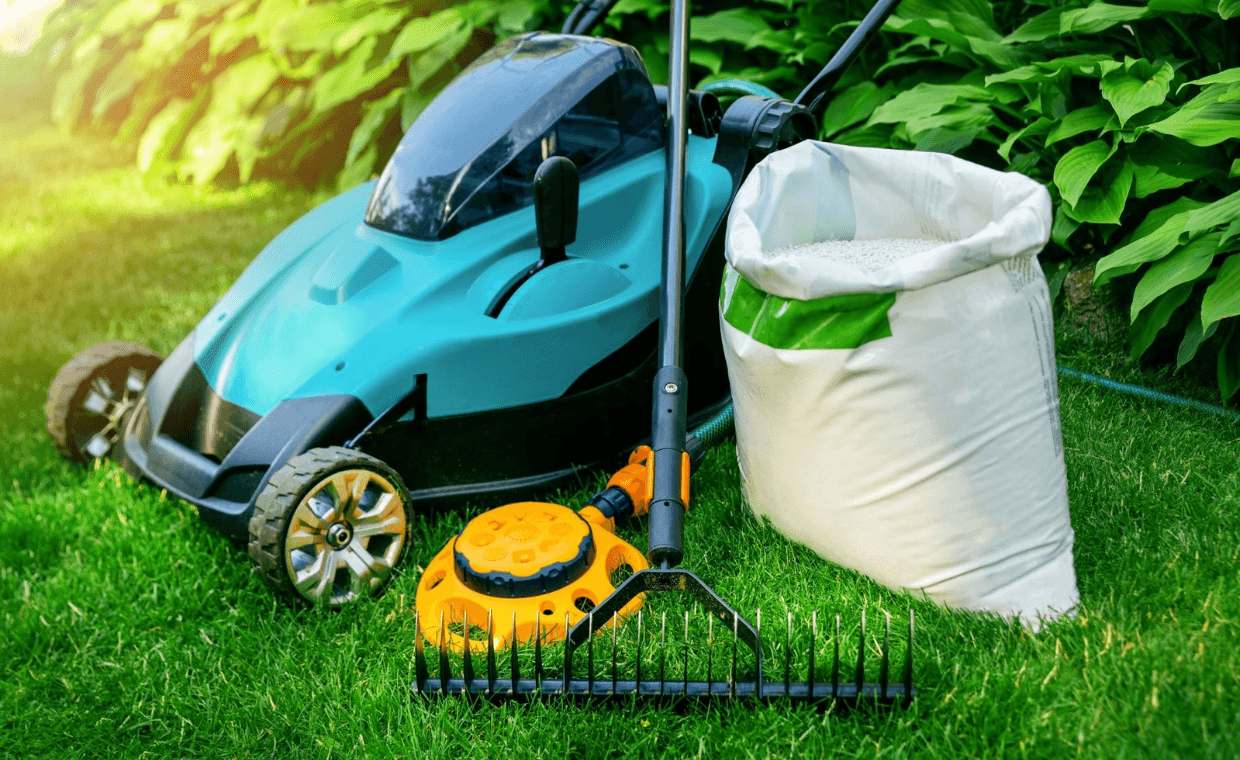
Keeping your garden tools in top shape is key to a thriving garden. Well-maintained equipment lasts longer, works better, and saves you money in the long run. This guide by Gharpedia will walk you through the steps to maintain garden tools, from cleaning and sharpening to proper storage. Whether you’re a seasoned gardener or just starting out, these tips to maintain garden tools will help you get the most out of your gardening gear.
Why Maintain Garden Equipment and Tools?
Before diving into the how to maintain garden tools guide, let’s consider why garden tool maintenance matters. Garden equipment faces tough conditions – dirt, moisture, and heavy use. Without proper care, tools can rust, dull, or break. Regular upkeep keeps tools working smoothly and safely. It also extends their life, saving you from frequent replacements. Think of it as an investment in your garden’s future.
Steps to Maintain Garden Tools and Equipment:
Follow these tips to maintain garden tools and keep them shiny:
01. Clean Your Tools

Cleaning garden tools after each use is the first step to maintain them. Clean tools work better and last longer. After each use, remove dirt and plant debris from your equipment. For hand tools like trowels and hand pruners, use a stiff brush or old rag to wipe them down. Larger tools like shovels and rakes may need a good rinse with a hose. Pay special attention to the working ends of tools, where dirt tends to build up.
For stubborn dirt, fill a bucket with warm, soapy water. Soak the tools for a few minutes, then scrub them clean. Rinse thoroughly and dry with a clean cloth. This can prevent rust and keep your tools looking as good as new.
What about power tools? Unplug them first, then wipe down the exterior with a damp cloth. Clear any grass clippings or leaves from vents and moving parts. For gas-powered equipment, consult the manual for specific cleaning instructions.
02. Sharpen Your Tools
Tools and equipment from Maupin’s and other providers make gardening easier and safer. Dull blades from sharp tools can damage plants and increase the risk of accidents. How often should you sharpen? It depends on use, but a good rule of thumb is to sharpen at the start of each gardening season.
For pruning shears and loppers, use a whetstone or diamond file. Hold the blade at the same angle as its existing edge and make smooth strokes away from you. Aim for 10-20 strokes on each side of the blade.
Shovels and hoes benefit from sharpening, too. Use a flat file to restore the edge, working at a 45-degree angle. File in one direction only, from the center of the blade outward.
Power tool blades need special care. Unless you’re experienced, it’s best to have them professionally sharpened. This ensures they’re balanced and safe to use.
03. Oil and Lubricate Them
Oil keeps metal parts moving smoothly and prevents rust. After cleaning and drying your tools, apply a light coat of oil to metal surfaces. Use boiled linseed oil for wooden handles – it penetrates the wood, preventing splits and cracks.
For tools with moving parts like pruners and loppers, a drop of machine oil on the pivot point works wonders. Work the tool open and closed to distribute the oil evenly.
Don’t forget your power tools. Check the manual for recommended lubrication points and schedules. Most need periodic oiling to keep motors and gears running smoothly.
04. Proper Storage To Ensure Good Garden Tool Care

Good storage practices protect your tools when they’re not in use. The golden rule? Keep them clean and dry. A garage or shed works well, but make sure it’s not damp.
Hang long-handled tools like rakes and shovels on a wall rack. This keeps them off the ground and prevents warping. For hand tools, a pegboard or toolbox offers organized storage.
Cover metal parts with a light coat of oil before long-term storage. This extra layer of protection guards against rust during the off-season.
What about power tools? Store them in their original cases if possible. If not, keep them on a shelf away from moisture. Remove batteries from cordless tools and store them separately in a cool, dry place.
Here’s our guide to build a garden shed:
Seasonal Garden Tool Maintenance Checklist
Regular check-ups keep your tools in prime condition. Here’s a seasonal maintenance checklist to follow:
Spring
- Clean and sharpen all tools
- Oil wooden handles
- Check power tools and replace spark plugs if needed
- Inspect hoses for leaks or damage
Summer
- Clean tools after each use
- Sharpen blades as needed
- Lubricate moving parts
Fall
- Deep clean all tools
- Sharpen and oil before storage
- Drain fuel from gas-powered equipment
- Clean and sharpen lawn mower blades
Winter
- Store tools in a dry place
- Check for any repairs needed
- Plan for replacements in the coming year
By following this garden tool maintenance checklist, you’ll ensure your garden equipment stays in top shape year-round, ready for action when you need it most.
Repairing and Replacing Parts

Even with good care, parts wear out. Replacing worn parts can give your tools new life. Common replacements include:
- Pruner blades
- Mower blades
- Wheelbarrow tires
- Garden hose washers
For simple fixes like replacing a handle or tightening bolts, basic DIY skills are enough. More complex repairs, especially on power tools, might need professional help.
When to Replace Tools
Sometimes, it’s better to replace a tool than repair it. Signs it’s time for a new tool include:
- Rust that won’t come off
- Cracked or split handles
- Bent or misshapen blades
- Motor problems in power tools
Quality tools can last for years with proper care. But if a tool becomes unsafe or inefficient, it’s time to invest in a replacement.
Eco-Friendly Garden Tool Maintenance Tips
Caring for your gardening tools can be kind to the environment, too. Here are some eco-friendly tips:
- Use biodegradable cleaning products
- Collect rainwater for cleaning tools
- Recycle old tools at scrap metal facilities
- Choose manual tools over gas-powered when possible
- Opt for rechargeable batteries in power tools
These small steps reduce waste and minimize your garden’s environmental impact.
Safety First When Doing Garden Tool Maintenance
Remember, safety is crucial when maintaining garden equipment. Always wear gloves when handling sharp tools. Unplug electric tools before cleaning or repairing them. For gas-powered equipment, work in a well-ventilated area and let engines cool before servicing.
Conclusion
Maintaining your garden equipment doesn’t have to be a chore. With regular care, your tools will serve you well for years to come. Clean after each use, sharpen when needed, and store properly. These simple tips to maintain garden tools will keep your garden thriving and your tools in top shape. By investing a little time in garden tool care, you’ll reap the rewards of easier, more enjoyable gardening.
Use your well-maintained garden tools to build an indoor garden:
Mastering Indoor Gardening: A Comprehensive Guide for Beginners






























